In 1958, the Green Bank site was still acquiring land for building an observatory. Farms were purchased, and staff were working out of the old farmhouses that dotted the valley, including this one affectionately known as ‘The Nutbin.” Before the Works Area was completed in 1959, administration and labs were housed in the Nutbin. In 1969, the entire structure was lifted up and driven down Route 92 to become a residence for employees.

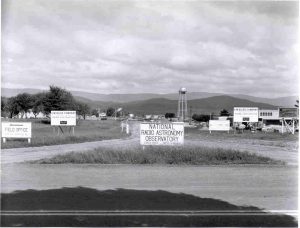
Welcome to Green Bank
The entrance to our Green Bank, West Virginia site, in the early 1960s. Our first telescope, the Howard E. Tatel 85-foot, is visible down the road in the center, and several additional telescopes would join it over the coming decades.
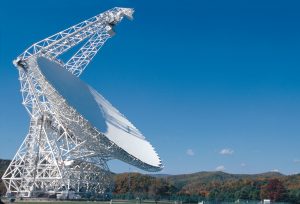
Postcard Perfect GBT
The Green Bank Telescope is the world’s largest, fully-steerable telescope. Its freedom of motion allows it to see 85% of the skies surrounding the planet.
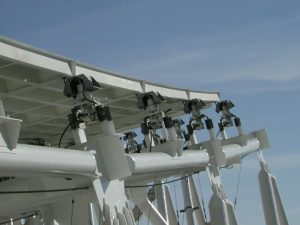
Busy Little Robots
Each of the Green Bank Telescope’s 2004 surface panels is adjusted by a small, computer-controlled motor called an actuator, seen here at the edge of the dish. The 2.3-acre surface of the GBT requires 2209 actuators to maintain its accurate surface shape.
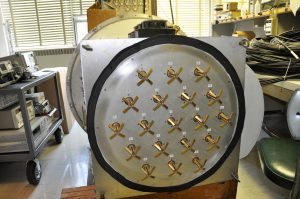
Phased Array Feed
This is a Phased Array Feed (PAF) for the Green Bank Telescope. It is put at the prime focus of the GBT. Each of the flanges is a crossed dipole antenna. There are 19 of these crossed dipoles. Their signals are sent to a digital signal processor which combines the signals from the 19 elements to form a single radio beam.
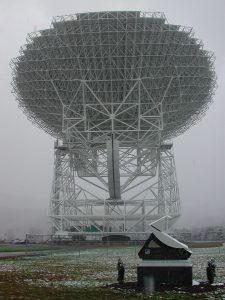
Bottom’s Up
The 110-meter dish of the Green Bank Telescope can be aimed all over the sky, thanks to its rotating base and a huge tilting gear. The GBT is the largest, fully-steerable telescope in the world and the largest moving object ever built on land.





